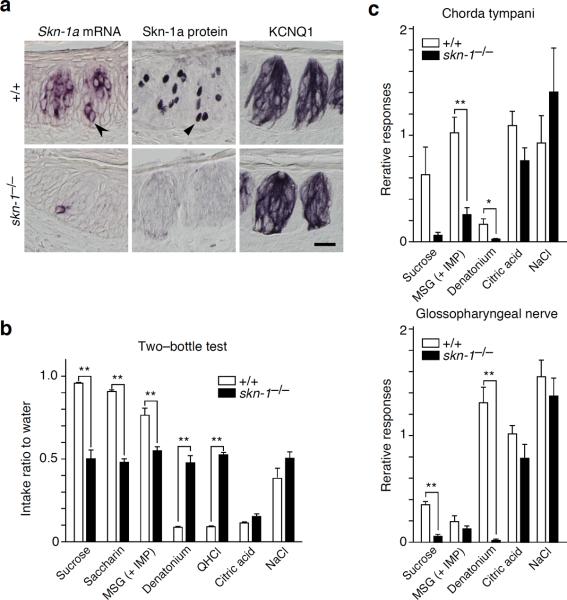Figure 2.
Skn-1a is essential for the reception and perception of sweet, umami, and bitter tastes. (a) Skn-1a mRNA and protein in skn-1−/− mice. The morphological phenotype of the taste bud was investigated by immunohistochemistry for KCNQ1. Black arrowhead and triangle indicate basal cell expressing Skn-1a/i mRNA and protein, respectively. Scale bar indicates 20 μm. (b) The two–bottle test for seven taste solutions of five taste modalities. Taste preferences of wild–type (n = 8) and skn-1−/− (n = 12) mice were measured relative to water. Preference to sweet and umami tastes and avoidance of bitter taste were disappeared in skn-1−/− mice. (c) Neural responses of chorda tympani (top panel) and the glossopharyngeal nerve (bottom panel) to sweet, umami, bitter, sour, and salty tastants by whole–nerve recording. Integrated neural responses of wild–type (n = 5–6) and skn-1−/− (n = 5) mice to taste solution were standardized to the magnitude of the response to ammonium chloride. Responses to sweet, umami, and bitter tastes were dramatically reduced in skn-1−/− mice. Significance was assessed by the t–test: *P < 0.05; **P < 0.01. Data are means ± s.e.m.

